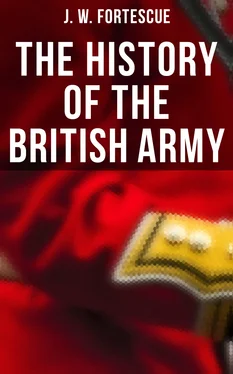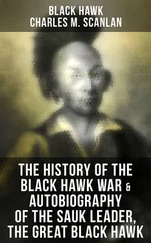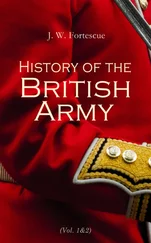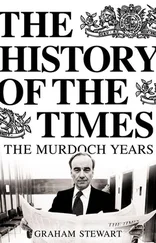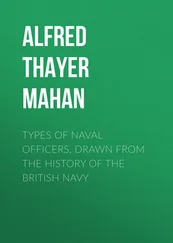J. Fortescue - The History of the British Army
Здесь есть возможность читать онлайн «J. Fortescue - The History of the British Army» — ознакомительный отрывок электронной книги совершенно бесплатно, а после прочтения отрывка купить полную версию. В некоторых случаях можно слушать аудио, скачать через торрент в формате fb2 и присутствует краткое содержание. Жанр: unrecognised, на английском языке. Описание произведения, (предисловие) а так же отзывы посетителей доступны на портале библиотеки ЛибКат.
- Название:The History of the British Army
- Автор:
- Жанр:
- Год:неизвестен
- ISBN:нет данных
- Рейтинг книги:4 / 5. Голосов: 1
-
Избранное:Добавить в избранное
- Отзывы:
-
Ваша оценка:
- 80
- 1
- 2
- 3
- 4
- 5
The History of the British Army: краткое содержание, описание и аннотация
Предлагаем к чтению аннотацию, описание, краткое содержание или предисловие (зависит от того, что написал сам автор книги «The History of the British Army»). Если вы не нашли необходимую информацию о книге — напишите в комментариях, мы постараемся отыскать её.
The History of the British Army — читать онлайн ознакомительный отрывок
Ниже представлен текст книги, разбитый по страницам. Система сохранения места последней прочитанной страницы, позволяет с удобством читать онлайн бесплатно книгу «The History of the British Army», без необходимости каждый раз заново искать на чём Вы остановились. Поставьте закладку, и сможете в любой момент перейти на страницу, на которой закончили чтение.
Интервал:
Закладка:
1141.
The miserable reign of Stephen, so unsatisfactory to the general historian, possesses through the continued development of English tactical methods a distinct military interest. The year 1138 is memorable for the Battle of the Standard, the first of many actions fought against the Scots, and typical of many a victory to come. The English knights as usual fought on foot, and aided by archers made havoc of the enemy. Here is already the germ of the later infantry; we shall find lances and bows give way to pikes and muskets, but for five whole centuries we shall see the foot compounded of two elements, offensive and defensive, until the invention of the bayonet slowly welds them into one. At the battle of Lincoln, on the other hand, we find the defensive element acting alone and suffering defeat, though not disgrace; for the dismounted knights who stood round Stephen fought with all the old obstinacy and yielded only to overwhelming numbers. Thus, though two generations had passed since the Conquest, the English methods of fighting were still in full vigour, and the future of English infantry bade fair to be assured.
Nor was the cavalry neglected; for amid all the earnest of this turbulent reign there was introduced the mimic warfare known as the tournament. This was an invention of the hot-blooded, combative French, and had been originally so close an imitation of genuine battle, that the Popes had intervened to prohibit the employment therein of any but blunt weapons. The tournament being not a duel of man against man, but a contest of troop against troop, was a training not only for individual gallantry, but for tactics, drill, discipline, and leadership; victory turning mainly on skilful handling and on the preservation of compact order. Thus by the blending of English foot and Norman horse was laid, earlier than in any other country of Europe, the foundation of an army wherein both branches took an equal share of work in the day of action.
1181.
The next in succession of our kings was a great soldier and a great administrator, yet the work that he did for the army was curiously mixed. Engaged as he was incessantly in war, he felt more than others the imperfection of the feudal as a military system. The number of knights that could be summoned to his standard was very small, and was diminished still further by constant evasion of obligations. He therefore regulated the commutation of personal military service for payment in money, and formed it, under the old name of scutage, into a permanent institution. Advantage was generally taken of the system, and with the money thus obtained he took Brabançon mercenaries, the prototypes of the landsknechts of a later time, permanently into his pay. When he needed the feudal force to supplement these mercenaries, he fell back on the device of ordering every three knights to furnish and equip one of their number for service; and finally, driven to extremity, he re-established the old English fyrd as a National Militia by the Assize of Arms. This, the earliest of enactments for the organisation of our national forces, and the basis of all that followed down to the reign of Philip and Mary, contained the following provisions:—
Every holder of one knight's fee shall have a coat of mail,[6] a helmet, a shield, and a lance; and every knight as many coats of mail, helmets, shields, and lances as there are fees in his domain.
Every free layman having in chattels or rent to the value of sixteen marks shall keep the same equipment.
Every free layman having in chattels or rent ten marks, shall keep an habergeon,[7] a chaplet[8] of iron, and a lance.
All burgesses and the whole community of freemen shall have a wambais,[9] a chaplet of iron, and a lance.
It is noteworthy that neither the bow nor the axe appear in this list of the national weapons, an omission for which it is difficult to account, since the bow was evidently in full use at the time. Possibly the temptation to employ it for purposes of poaching may have been so strong as to make the authorities hesitate to enjoin the keeping of a bow in every poor freeman's house. The influence of the poacher will be found equally potent when the time comes for the introduction of firearms.
Richard the Lion-Heart, like his predecessors, preferred to employ mercenaries for his wars, while even the knights who accompanied him to the Crusade were in receipt of pay. Were it not that his achievements in the Holy Land had left little mark on English military history they would be well worthy of a detailed narrative, for Richard was beyond dispute a really great soldier, a good engineer, and a remarkably able commander. The story of his march from Joppa to Jerusalem and of his victory at Arsouf is known to few, but it remains to all time an example of consummate military skill. A mixed force compounded of many nations is never very easy to control, and it was doubly difficult when the best of it was composed of knights who hated the very name of subordination. Yet it was with such material, joined to a huge body of half-disciplined infantry, that Richard executed a flank march in the presence of the most formidable of living generals, and repulsed him brilliantly when he ventured, at an extremely trying moment, to attack. The plan of the campaign, the arrangements and orders for the march, the drill and discipline imposed on the knights, and the handling of the troops in the action are all alike admirable. Yet, as has been already stated, the lessons of the Crusades wrought little influence in England, mainly because she had already learned from her own experience the value of a heavily armed infantry, and of the tactical combination of missile and striking weapons. In the rest of Europe they were for a time remembered but very soon forgotten;[10] and England was then once more left alone with her secret.
Two small relics of the Crusades must however find mention in this place. The first is the employment of the cross as a mark for distinguishing the warriors of different nations, which became in due time the recognised substitute for uniform among European soldiers. Each nation took a different colour for its cross, that of the English being at first white, which, curiously enough, is now the regular facing for English regiments of infantry. The second relic is the military band which, there seems to be little doubt, was copied from the Saracens. In their armies trumpets and drums, the latter decidedly an Oriental instrument, were used to indicate a rallying-point; for though at ordinary times the standards sufficed to show men the places of their leaders, yet in the dust of battle these were often hidden from sight; and it was therefore the rule to gather the minstrels (such was the English term) around the standards, and bid them blow and beat strenuously and unceasingly during the action. The silence of the band was taken as a proof that a battalion had been broken and that the colours were in danger; and the fashion lasted so long that even in the seventeenth century the bandsmen in all pictures of battles are depicted, drawn up at a safe distance and energetically playing.
1214.
The reign of King John accentuated still further the weak points of the English feudal system as a military organisation. The principle introduced by the Conqueror had been to claim for the sovereign direct feudal authority over every landholder in the country, suffering no intermediate class of virtually independent vassals, such as existed in France, to intercept the service of those who owed duty to him. Of the advantages of this innovation mention shall presently be made elsewhere, but at this point it is necessary to dwell only on its military defects. The whole efficiency of the feudal system turned on the creation of a caste of warriors; and such a caste can obviously be built up only by the grant of certain exclusive privileges. The English knights possessed no such privileges. There were no special advantages bound up with the tenure of a fief. Far from enjoying immunity from taxation, as in France and Germany, the knights were obliged to pay not only the imposts required of all classes, but scutage into the bargain. Again the winning of a knight's fee lay open to all ranks of freemen, so that it could not be regarded as the hereditary possession of a proud nobility. Yet again, the grant of the honour of knighthood was the exclusive right of the sovereign, who converted it simply into an instrument of extortion. Briefly, there was no inducement to English knights faithfully to perform their service; the sovereign took everything and gave nothing; and at last they would endure such oppression no longer. When John required a feudal force, in the year 1205, he was obliged to arrange that every ten knights should equip one of their number for service. Moreover, the knights who did serve him showed no merit; the English contingent at Bouvines having covered itself with anything but glory. Finally, came mutiny and rebellion and the Great Charter, wherein the express stipulation that fiefs should be both alienable and divisible crushed all hopes of an hereditary caste of warriors for ever.
Читать дальшеИнтервал:
Закладка:
Похожие книги на «The History of the British Army»
Представляем Вашему вниманию похожие книги на «The History of the British Army» списком для выбора. Мы отобрали схожую по названию и смыслу литературу в надежде предоставить читателям больше вариантов отыскать новые, интересные, ещё непрочитанные произведения.
Обсуждение, отзывы о книге «The History of the British Army» и просто собственные мнения читателей. Оставьте ваши комментарии, напишите, что Вы думаете о произведении, его смысле или главных героях. Укажите что конкретно понравилось, а что нет, и почему Вы так считаете.
